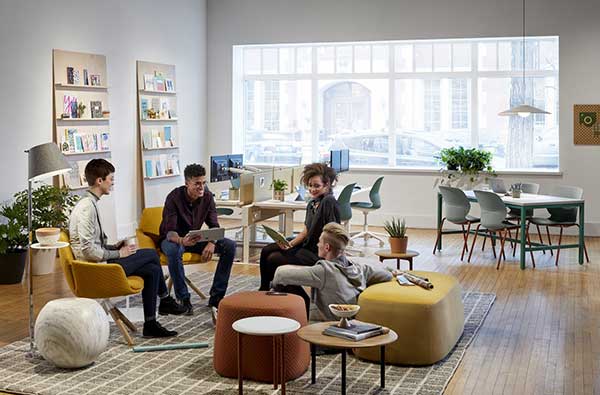
No One’s Working: How To Boost Productivity from Remote Teams
In today’s remote work era, a perceived dip in productivity is a very real and prevalent concern for many business leaders. The symptoms are familiar: missed deadlines, non-responsiveness, drops in output, and frustrations from stakeholders. All of which raises the question of how to boost productivity from your remote team.
These challenges could be attributed to the myriad problems that invariably accompany any paradigm shift. But dig a little deeper, and the heart of the matter is often managers clinging to outdated, industrial-era strategies that no longer align with today’s autonomous and dispersed workforces.
Changing Mindsets and Management Practices
The remote work shift presents a conundrum, creating new opportunities for worker flexibility while posing formidable challenges to business leaders. For instance, how does an office design services firm maintain standards across dispersed sites? How do real estate professionals navigate the shift from centralized offices to hub-and-spoke solutions that offer increased proximity to distributed home offices? How can architects and designers ensure effective collaboration and creativity exist, regardless of whether the interactions occur in-person, virtually, or through some hybrid medium?
Addressing these unique scenarios necessitates a new management mindset, one that pivots from micromanagement tactics to empowering strategies. The new paradigm is all about evolving old habits, enhancing transparency, fostering accountability, and boosting engagement across teams, irrespective of geographical locations. These are essential steps needed to boost productivity from remote teams.

Set Expectations Around Outcomes
Managing by activity and time spent is a vestige of a bygone era that’s virtually ineffective in the remote work landscape. Instead, to boost productivity from remote teams, use techniques that modern teams respond better to, outcome-focused goals. For project leaders, this could mean focusing on key milestones or specific deliverables related to space planning and interior office design. For business executives, key business objectives and employee stretch goals should be clearly defined.
Demystify organizational goals, ensure every team member comprehends the role they play in meeting strategic objectives. Emphasize collaboration in setting specific, measurable SMART goals tied directly to business key performance indicators (KPIs) like revenue, customer satisfaction, and product milestones. Employ frameworks like objectives and key results (OKRs) that prioritize outcomes over hours logged, and leverage consistent processes, templates, and checklists to simplify achieving these goals.

Adopt Tools for Transparency
There are a plethora of tools designed to enhance transparency and foster team connections. For instance, office design services firms can use project management software like Asana to track interior office design work and keep clients updated on space planning and furniture specification. Communication tools like Slack or Microsoft Teams keep conversations flowing and nurture community within distributed teams.
When implementing these technologies, be judicious to avoid any perception of micromanagement. Clearly communicate the purpose of these tools and set expectations upfront on what data will be reviewed.
Provide Support Through Coaching
The remote environment demands a shift from traditional managerial roles to more supportive, coaching-centric alternatives. This can be achieved through regular check-ins to understand individual challenges and provide guidance. Empower team members by giving them opportunities to lead new projects. Celebrate achievements to foster a sense of accomplishment and belonging. Remember, trust is built through flexibility and understanding, particularly when personal obligations arise.
Boost Engagement & Morale
Remote work can often lead to feelings of isolation and disengagement over time. Combat this by fostering a sense of community and high morale through a mix of virtual and physical team-building activities, employee resource groups around shared interests, recognition during meetings, gamification, contests, and incentives. Little gestures like sending company swag or handwritten notes also go a long way towards creating a sense of belonging and boosting morale.
Act Now to Boost Productivity from Remote Teams
The transition to remote work presents an opportunity for innovation and rethinking old norms. By adopting an empowering, collaborative leadership style, leveraging transparency-enhancing tools, and embracing strategies tailored to the virtual environment, managers can lead 21st-century remote teams to success. The remote work revolution is a complex challenge, but with the right strategies, it becomes an opportunity boost productivity from remote teams and to lead the way in the 21st-century workforce.


